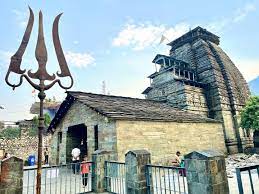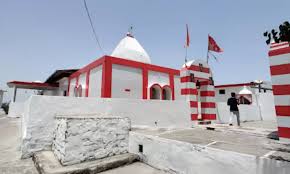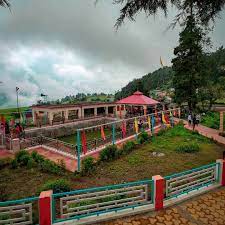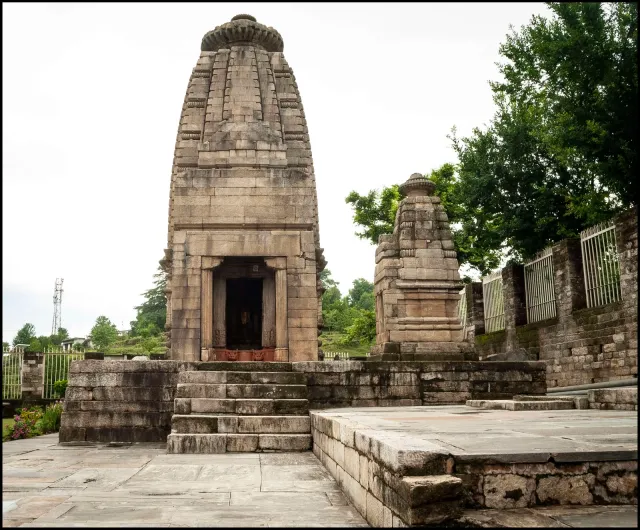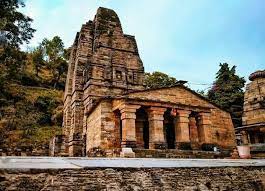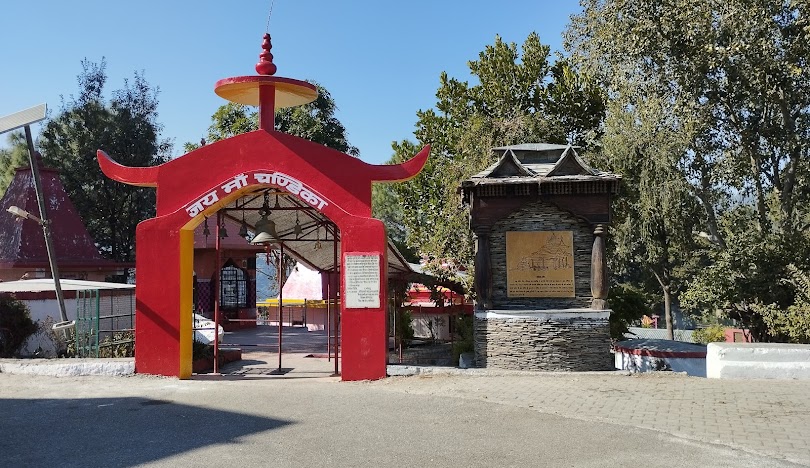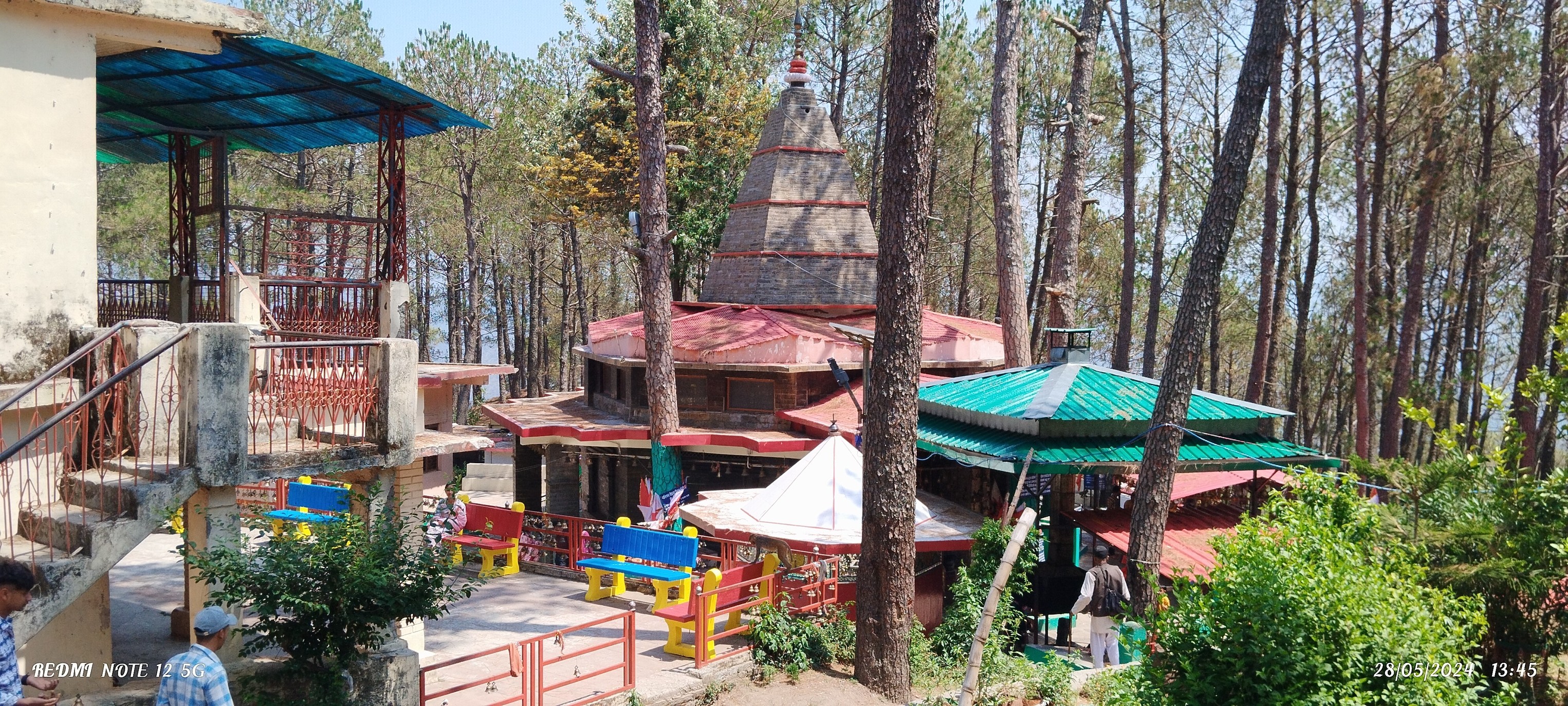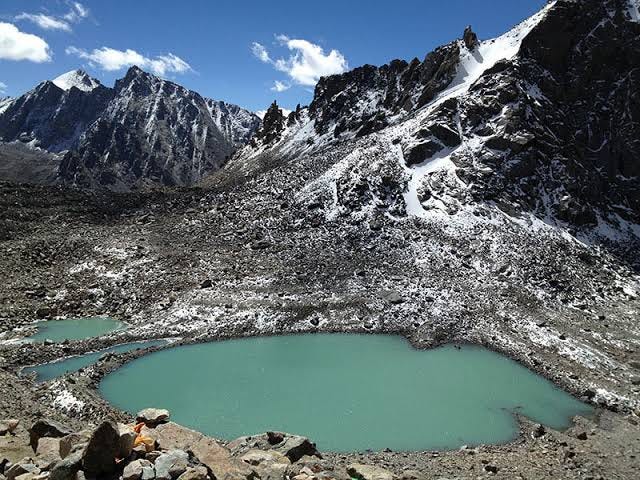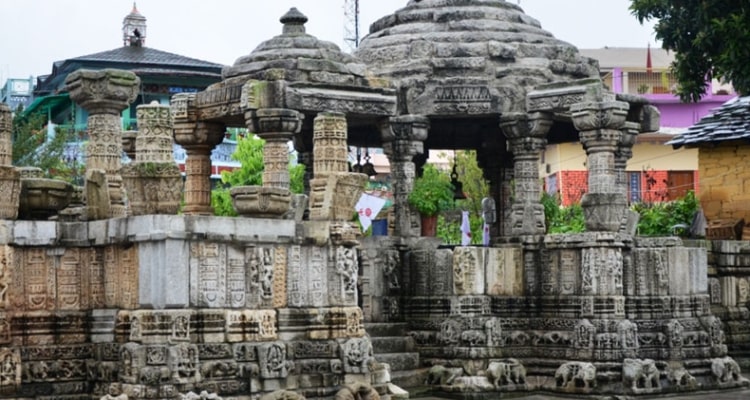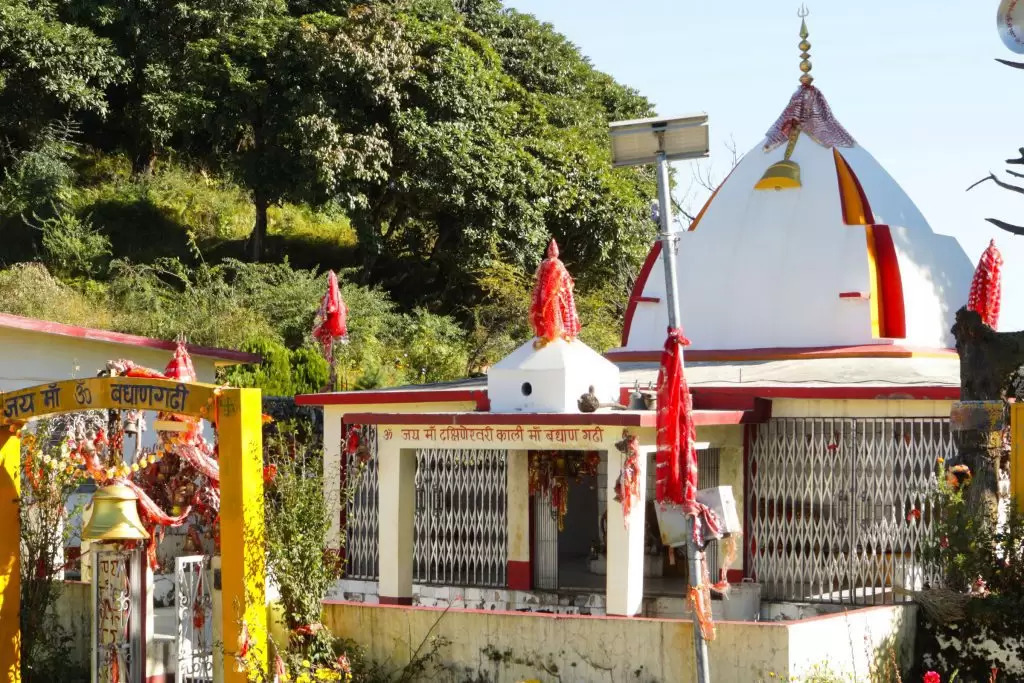Climbing Through History
Gopeshwar is a town wherein the mountains hush themselves at sunrise. You wake early, the solar simply touching the peaks. The air is skinny, cold, alive. And then you definitely see it: the spire of Gopinath Temple (गोविपनाथ मंदिर) developing above stone roofs, calling you nearer.
They say Gopinath Temple was built somewhere between the 9th and 11th centuries by the Katyuri kings (कट्यूरि राजा). Not in grand marble, but in steady stone, carved timber, devotion fashioned in shilas. Devotees say every nook, each carving, breathes remembrance.
What Makes It Feel Sacred
The temple is dedicated to Lord Shiva (महादेव). In its sanctum sanctorum (गर्भग्रह) sits a self-manifested Shivling (शिवलिंग), referred to as Gopinath. Around it are 24 small doors, tiny portals for devotion and mystery. Outside, within the temple courtyard, stands a Trishul (त्रिशूल) about 5 metres tall, a product of eight extraordinary metals. The metal doesn’t rust, locals say. The wind, rain, and snow don’t seem to hurt it. And legends say only a true devotee’s touch can make it tremble.
Broken idols lie around the edges. Moss and time caress them. You can tell many temples once stood here, perhaps fallen, perhaps abandoned, but Gopinath remains.
Legends & Myths
Here, myth isn’t just a story. It is woven with stones and beliefs.
They tell that Lord Shiva threw his trident at Kamadeva (कामदेव) God of Love when Kamadeva interrupted Shiva’s deep meditation. That trident landed and stuck here. People say the Trishul is the same one.
Also, there is a belief that when Rudranath Ji, one of the Panch Kedar (पंच केदार), is closed for winter, his idol (विग्रह) comes down and is temporarily housed in Gopinath Temple. In winter, devotees worship Rudranath here. It turns this temple into a winter seat of Rudranath.
Some say that the town name “Gopeshwar” comes from a legend: Lord Shiva took the form of a Gopi (female devotee) to see Krishna in Vrindavan, and was called “Gopeshwar”. Others say it connects differently. But when you stand there, the name feels right Gopi, Shiva, devotion, presence.
Architecture & What You See
Walk in. The temple features a huge dome, which serves as the primary dome masking the primary sanctum. Its form echoes other Himalayan Shiva temples, yet it holds something wonderful. Stone walls carved with motifs, wood beams underneath a sloping roof, alleys between pillars worn clean with the aid of pilgrims’ feet.
The courtyard is open to the sky. The Trishul stands vigil towering, metal polished by hands, smeared with sindoor or ash sometimes. Outside, smaller shrines: Ganesh, Hanuman, Durga. Bells hang, lamps shine in the evening.
From certain corners, when the sun sets, shafts of golden light spill over ridges, hitting the temple stones, making them glow like flame. You feel that light in your skin.
The Devotee’s Day
The temple opens early. Mangala Aarti (मंगल आरती) draws a handful of devotees in the dawn cool. Shopkeepers, priests, pilgrims some barefoot, some in woollens come to offer flowers, water, incense.
Mid-morning, the courtyard fills more. Some come passing through on pilgrimage; others come just to breathe. You hear the hum of the town, a dog barking, birdcalls, soft chanting. Someone offers sweets, someone sells malas or rudraksha beads.
In the evening, the “Sandhya Aarti (संध्या आरती)” draws more people. The temple lamp light fights the dusk. The bells ring clearly. A slow chant rises. Devotees close their eyes. Children watch. Sometimes, pilgrims share a small prasad, clasp hands, and greet each other with nods of respect.
On Maha Shivratri, the whole temple shines. Lamps line the path up. Devotees fast or stay up late. Night has a thrum, Bhajans, drums, stories. The temple becomes a candle in the night.
What It Feels Like to Be There
You lift your hand to touch the Trishul base. Cold metal, rough where weather has worn it. A breeze moves your shawl. You smell incense, wet stone, earth after rain. You hear dripping water somewhere, maybe from a broken idol’s niche.
You sit by the Shivling, close enough to feel the stone warmth from lamps, cool air on your back. Devotees murmur prayers. Someone offers milk. Someone touches their forehead and smiles. That smile, tiny, simple, carries more weight than any ornamented art.
Outside, the town glows. Lights appear in windows. Children chase lanterns. The river or the valley below whispers. The temple watches quietly.
Best Time & Travel Tips
When to go: Late spring (April-June) and autumn (September-November) are best. The weather is clear, the skies are open. Winters are cold, monsoons can bring rain and slippery roads.
Getting there: Gopeshwar is reachable by road from Dehradun, Rishikesh, and Chamoli. Buses or taxis. Once in Gopeshwar town, the temple is central, maybe a short walk from local roads.
What to carry: Woollens for early morning or winter. Water, small snacks, basic prasad. Shoes are easy to remove, and clothes are modest. If visiting festivals, expect a crowd. Be early.
Mindful tips: Touch the stones quietly. Offer flowers. Sit awhile. Let silence come. Permit your inner self to slow.
Why It Matters
Gopinath Temple matters because it is older than many memories. Because it is not loud, yet its presence is loud.
Because faith doesn’t always need spectacle, here, stone and belief meet in quiet moments. When a pilgrim’s finger touches Trishul, or when someone kneels before Shivling in morning light, there is no performer, no show, just devotion.
Because in a fast world, this temple asks you to pause. To see what walls remember. To sense the wind through the wood, the echo of the bell, the glow of the lamp.
Gopinath Temple is not just a place on the map. It is a meeting point of myth and lived life, of gods and people, of stone and soul.
Closing
I walked away from Gopinath as dusk settled. Temple lamp lights dimmed. The last bells died down. The path toward Gopeshwar town was quiet. My breath still catches sometimes from climbing or the cold. My heart is softer.
I carried with me the echo of the Trishul, the warmth of the lamps, and the feel of cold stone under my palm. I left something too, some unseen weight lifted, some yearning eased.
Gopinath Temple (गोविपनाथ मंदिर) waits always for pilgrims, seekers, wanderers. If you go, go with your heart open. You may find that your journey mattered as much as reaching the temple.

